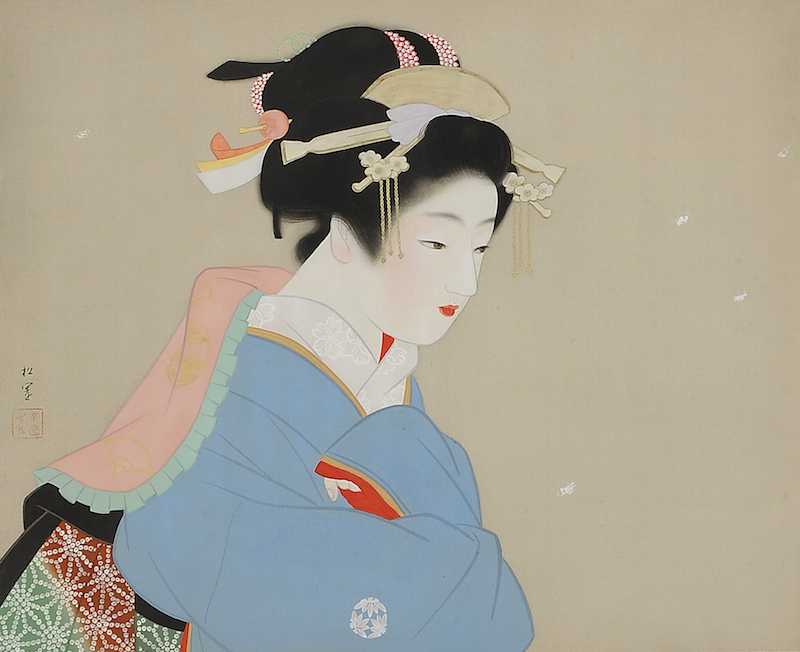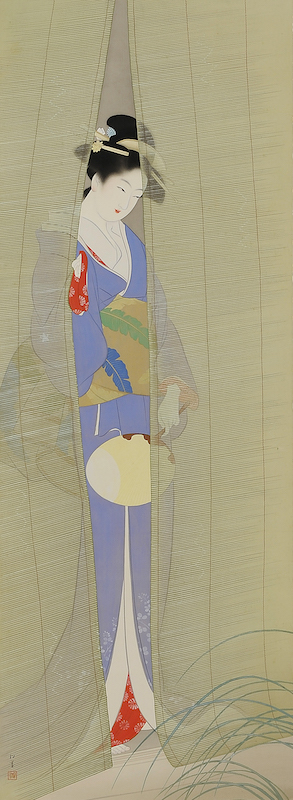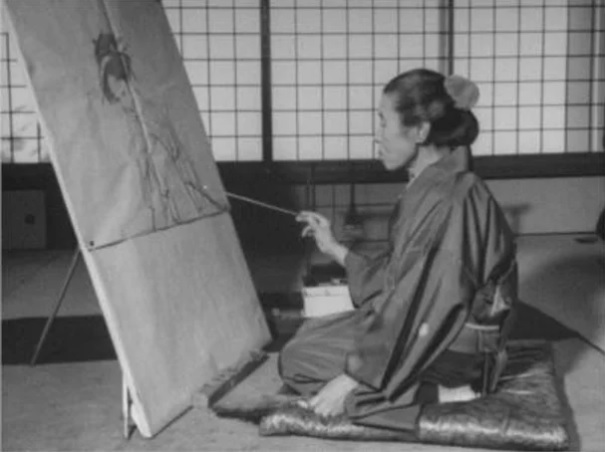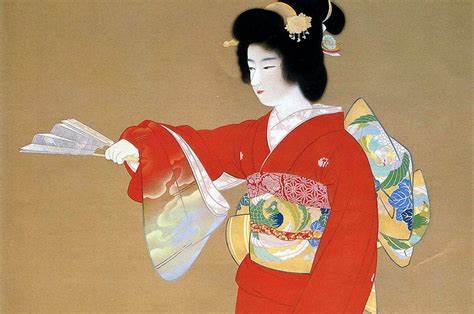Krispin Joseph PX
“Never once did I paint a work with the expectation that it would be fine as long as the woman depicted was beautiful. My earnest hope is that all my works are like fragrant jewels, always with a sense of fresh purity, never with even an iota of the vulgar,” said Uemura Shōen (1875-1949), one of the amazing women artists in Japanese Art for a long time. Shoen was born just after the impacted ‘Edo’ period; she was known as a Japanese women artist active before the 20th century.
Uemura Shoen was the pseudonym of Uemura Tsune, known for her beautiful women’s paintings throughout Japanese art history. Shoen used to paint in the traditional Japanese Nihonga style using mineral pigments, ink, and other organic dyes on silk or paper. She brings her brushes and painting materials to her husband’s home after marriage and starts painting as a Japanese woman. She often paints as a hobby, and her artistic skill is noted and well-received by the people surrounding her. Believed Shoen got good training from her family in painting, which helped her to carry the style and form far beyond the breadth of artistic skill. Her free art practice, even in front of her friends and family, attract many art lovers to her works, especially the women’s narratives and life.

Yamatane Museum of Art
Credit: yamatane-museum.jp
Nihonga style is known as ‘Pictures of Japan’ because artists who work in this style don’t follow the Western-style painting predominantly in Japan at that time, known as Yoga. What is the importance of Shoen? She started to change the mentality of art-practising women in Japanese culture and became one of Japan’s most renowned female artists. She was honoured by the Order of Culture Award, established in 1937 and awarded to men and women for contributions to Japanese art, literature, Science, technology, and culture. She was the first woman to get this award; she was ‘unknown’ in the Japanese mainstream art scene before that.
Before the Edo period, no women painter would ever receive professional training at an established school. In the time of Shoen, in 1858, several women were active in the Japanese art scene. That movement helps Shoen to achieve artistic practice. ‘She was born in Shimogyo, Kyoto, two months after her father’s death and was raised by her mother and aunts. Her mother ran a tea shop, and Shōen would sit in the corner drawing while she tended to customers (the artist’s earliest fans), mentioned in Google Art and Culture.

Yamatane Museum of Art
Credit: yamatane-museum.jp
She challenged the figurative form of women’s paintings. In contrast, in the Edo period, women were treated in Japan as lower-class citizens, and the genre usually recollected this substance into its female matters. Shoen brings unique layers of Japanese artistic practice by depicting women as subjects and central figures. In Shoen’s artwork, women play a vital role, not only as subjects but as spectators. Shoen never tried to narrate women as ‘mere bodies’ in her paintings, and the emergence of women’s public life Taisho era was also reflected in Shoen’s paintings.

Credit: domestika.org
Shoen’s mother is behind the artistic life of the artist, and she supports her decision to continue the artistic practice and career as a painter. She sent her to Kyoto Prefectural Painting School to learn painting when she was 12. From there, she learned to paint professionally under the guideline of Chinese-style landscape painter Suzuki Shōnen. He unlocked her artistic practice more after he realised Shoen’s natural talent. He also let her pursue figure painting, even though the school didn’t permit this until the later years of training.





